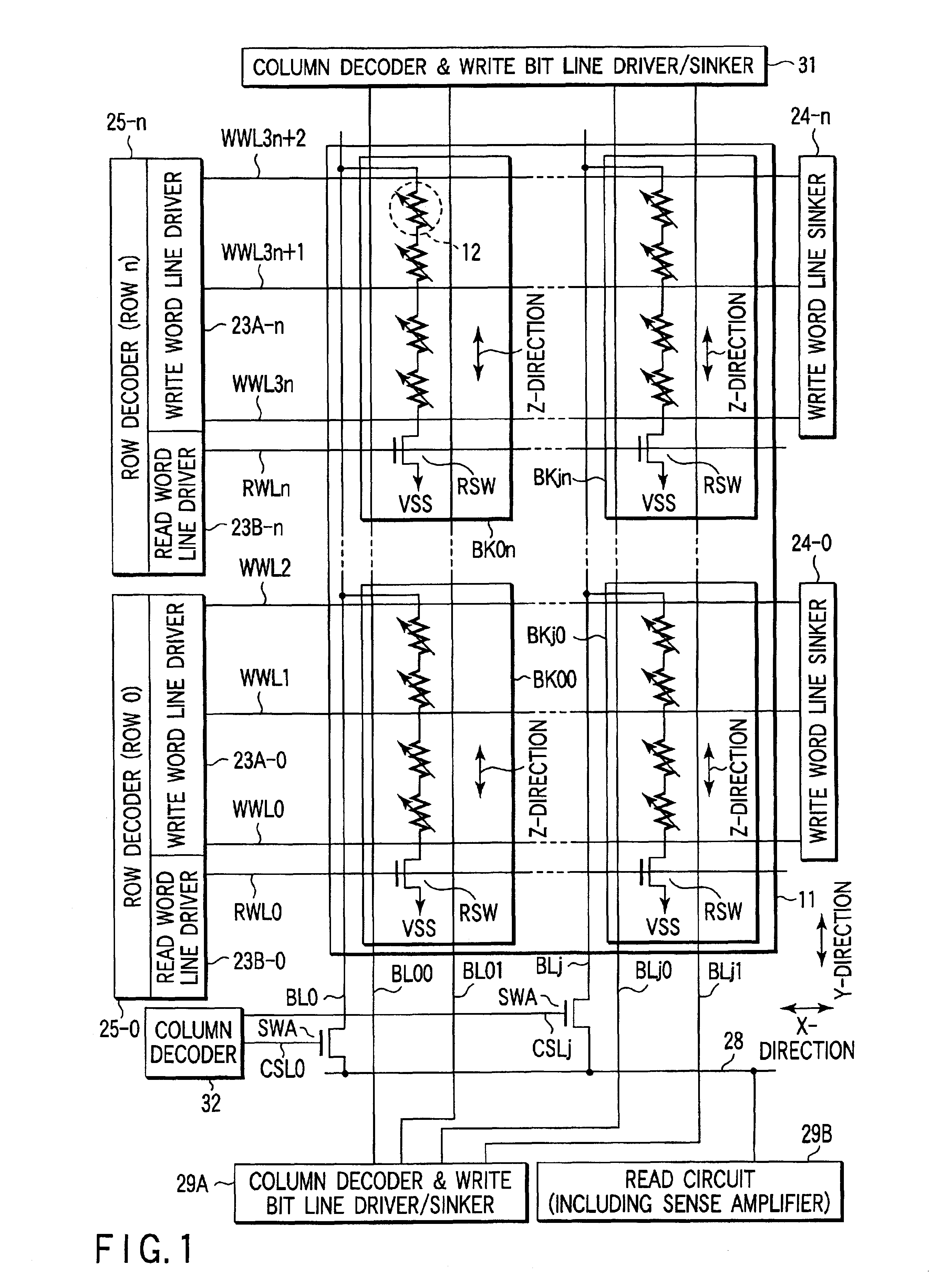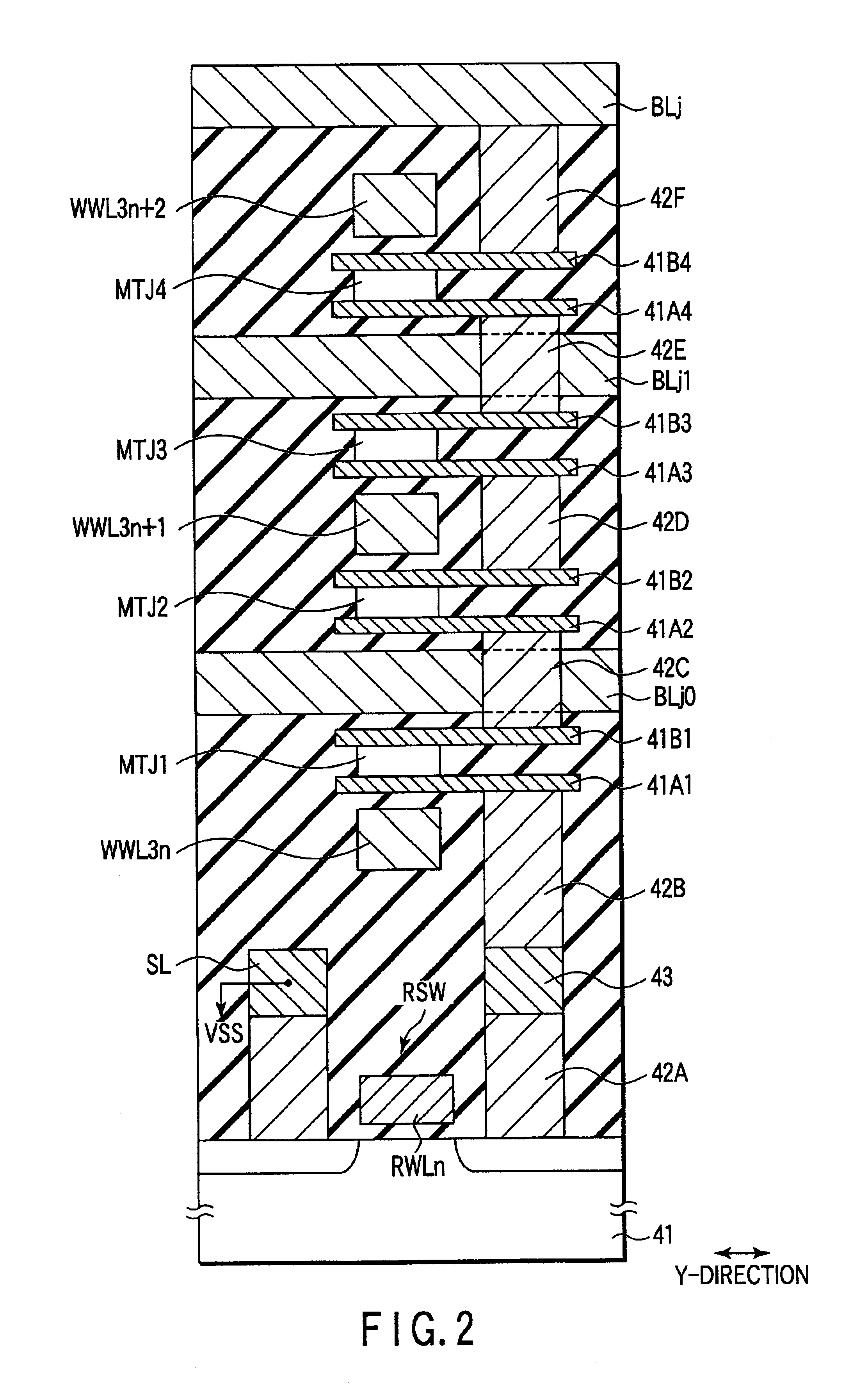Magnetic random access memory
a random access and memory technology, applied in the field of magnetic random access memory, can solve the problem that the memory capacity cannot be hardly increased
- Summary
- Abstract
- Description
- Claims
- Application Information
AI Technical Summary
Benefits of technology
Problems solved by technology
Method used
Image
Examples
example 1
[0500]① Structure Example 1
[0501]The TMR element MTJ1 is constituted by a basic unit. The basic unit means a unit consisting of a tunneling barrier, a ferromagnetic layer (storage layer) arranged on one side of the tunneling barrier, and a ferromagnetic layer arranged on the other side of the tunneling barrier and an anti-ferromagnetic layer.
[0502]Since the ferromagnetic layer arranged on the other side of the tunneling barrier is in contact with the anti-ferromagnetic layer, the direction of its magnetization is fixed. The ferromagnetic layer arranged on the other side of the tunneling barrier and the anti-ferromagnetic layer which is in contact with the ferromagnetic layer constitute the pinned layer.
[0503]A resistance value of the TMR element MTJ1 realized by this structure is determined as R.
[0504]FIG. 58 shows an example of the TMR element MTJ2.
[0505]The TMR element MTJ2 is constituted by the two basic units. However, one ferromagnetic layer (storage layer) is shared by the two...
example 2
[0516]② Structure Example 2
[0517]In Structure Example 1, description has been given as to the technique which changes a number of tunneling barriers in accordance with a number of basic unit (MTJ elements) and varies a resistance value of the TMR element. In this case, however, since a number of the basic units varies in accordance with each TMR element in on block, the thickness of each TMR element differs.
[0518]Thus, in Structure Example 2, in order to solve the problem that the thickness of each TMR element differs in one block, all the TMR elements in one block are constituted by the same number of units and they have the same thickness.
[0519]For example, when one block is constituted by four TMR elements, each TMR element is constituted by eight units.
[0520]Further, a resistance value of the TMR element is adjusted by determining some of a plurality of units constituting that TMR element as dummy units. The dummy unit means a unit in which the tunneling barrier of the basic uni...
PUM
 Login to View More
Login to View More Abstract
Description
Claims
Application Information
 Login to View More
Login to View More - R&D
- Intellectual Property
- Life Sciences
- Materials
- Tech Scout
- Unparalleled Data Quality
- Higher Quality Content
- 60% Fewer Hallucinations
Browse by: Latest US Patents, China's latest patents, Technical Efficacy Thesaurus, Application Domain, Technology Topic, Popular Technical Reports.
© 2025 PatSnap. All rights reserved.Legal|Privacy policy|Modern Slavery Act Transparency Statement|Sitemap|About US| Contact US: help@patsnap.com



